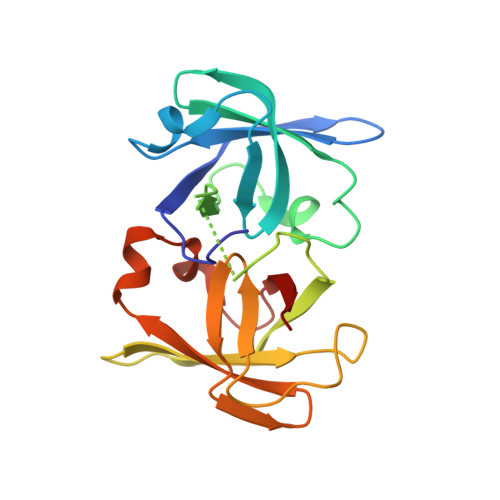Structure of lumazine protein, an optical transponder of luminescent bacteria.
Chatwell, L., Illarionova, V., Illarionov, B., Eisenreich, W., Huber, R., Skerra, A., Bacher, A., Fischer, M.(2008) J Mol Biology 382: 44-55
- PubMed: 18602927
- DOI: https://doi.org/10.1016/j.jmb.2008.06.052
- Primary Citation of Related Structures:
3DDY - PubMed Abstract:
The intensely fluorescent lumazine protein is believed to be involved in the bioluminescence of certain marine bacteria. The sequence of the catalytically inactive protein resembles that of the enzyme riboflavin synthase. Its non-covalently bound fluorophore, 6,7-dimethyl-8-ribityllumazine, is the substrate of this enzyme and also the committed precursor of vitamin B(2). An extensive crystallization screen was performed using numerous single-site mutants of the lumazine protein from Photobacterium leiognathi in complex with its fluorophore and with riboflavin, respectively. Only the L49N mutant in complex with riboflavin yielded suitable crystals, allowing X-ray structure determination to a resolution of 2.5 A. The monomeric protein folds into two closely similar domains that are structurally related by pseudo-C(2) symmetry, whereby the entire domain topology resembles that of riboflavin synthase. Riboflavin is bound to a shallow cavity in the N-terminal domain of lumazine protein, whereas the C-terminal domain lacks a ligand.
- Lehrstuhl für Biologische Chemie, Technische Universität München, D-85350 Freising-Weihenstephan, Germany.
Organizational Affiliation:

















